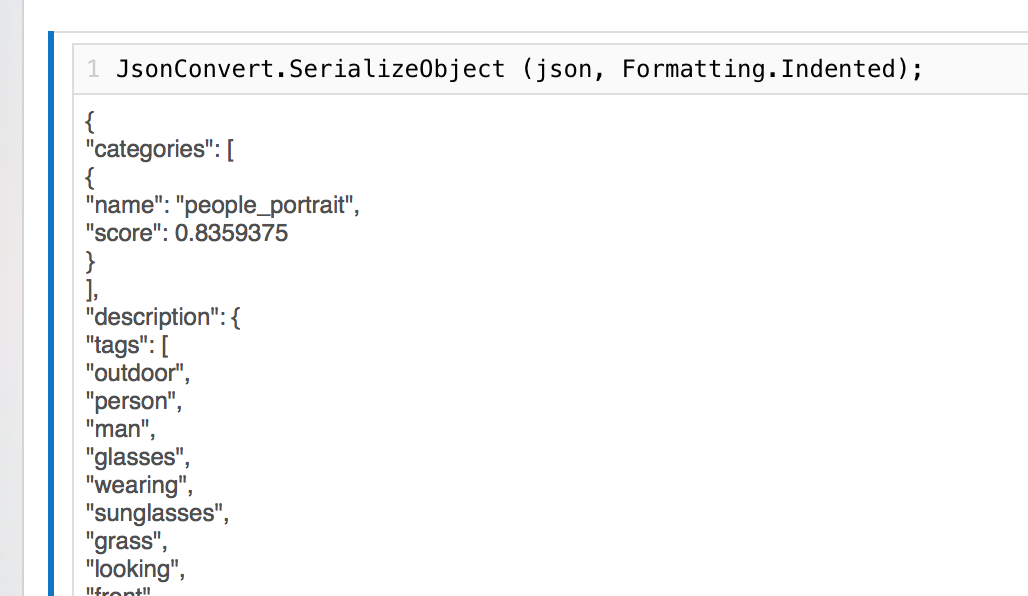Xamarin Workbooks provide a blend of documentation and code that is perfect for experimentation, learning, and creating guides and teaching aids.
Create a rich C# workbook for .NET Core, Android, iOS, Mac, or WPF, and get instant live results as you learn these APIs. Workbooks also have access to the vast NuGet package ecosystem to make learning new APIs a breeze.
| Service | macOS | Windows | Linux |
|---|---|---|---|
| VSTS | |||
| AppVeyor | |||
| Travis |
Ensure git submodules are up-do-date:
git submodule sync
git submodule update --recursive --initNow simply run:
msbuild /restoreOr for the strict .NET Core subset:
dotnet buildThe top-level build system can be driven either by the system msbuild or by
the installed .NET Core SDK dotnet build. When using dotnet build, only
projects that can run on .NET Core will be built.
Additionally, the build can be shaped via profiles. Any number of profiles may be selected. By default, all profiles will be selected.
Profiles are specified via the MSBuild Profile property and may be
combined with a + delimiter:
msbuild /restore /p:Profile=Console+Web| Name | Description | Minimum Dependencies |
|---|---|---|
Web |
Build the ASP.NET Core Workbooks server | .NET Core ≥ 2.1, Node.js ≥ 8.10, Yarn ≥ 1.5.1 |
Console |
Build the Console client | .NET Core ≥ 2.1 |
Desktop |
Build the macOS or Windows desktop client | Visual Studio 2017 ≥ 15.6 |
Note: Support for Xamarin platforms will be detected automatically and built if available. On macOS, the "macOS" platform (Xamarin.Mac) must be installed to build the client. Xamarin/mobile is entirely optional on Windows.
Many properties that can be specified on the command line will be persisted for subsequent runs. For example:
# "Configure" and perform initial build:
msbuild /restore \
/p:Profile=Web \
/p:Configuration=Release \
/p:WithoutXamarin=true
# Rebuild with the same configuration as above, implied
# thanks to _build/Configuration.props:
msbuildThe following properties will persist and do not need to be specified on the command line on subsequent runs:
| Name | Description | Default Value |
|---|---|---|
Profile |
The set of profiles to build | Web+Console+Desktop |
Configuration |
The build configuration (Debug or Release) |
Debug |
| Environnment: | ||
WithoutXamarin |
A shortcut for setting all HaveXamarin* properties below to false |
unset |
HaveXamarinMac |
Whether or Xamarin.Mac is available to the build | auto-detected |
HaveXamarinIos |
Whether or Xamarin.iOS is available to the build | auto-detected |
HaveXamarinAndroid |
Whether or Xamarin.Android is available to the build | auto-detected |
| External Tools: | ||
NuGet |
Path to nuget.exe |
resolved via PATH |
Node |
Path to node |
resolved via PATH |
Yarn |
Path to yarn |
resolved via PATH |
Npm |
Path to npm |
resolved via PATH |
If you want to build a Release build on Windows (for example, you want to
build an installer), you will need to build in a slightly different fashion.
First, make sure that you connect to a Mac build host via Visual Studio at
least once. You can do this by doing the following:
- Open Visual Studio
- Go to Tools → Options → Xamarin → iOS Settings
- Click "Find Xamarin Mac Agent"
- Select a Mac on your network, or add one by name
- Enter credentials when prompted
Once the connection completes, click OK to close all the dialogs. Then,
build the Release configuration by running the following:
msbuild \
/p:MacBuildHostAddress="<hostname-or-ip-of-your-mac>" \
/p:MacBuildHostUser="<mac-username>" \
/p:Configuration=Release /t:Build,InstallThis is needed because the installer build now needs a zipped copy of the
Xamarin.iOS workbook app from the server. The Xamarin.Workbooks.iOS project
will do the build and copy automatically when a Mac build host is used. If you
are building in Debug, you can omit those properties unless you need the
Workbook app to be copied locally, in which case, include them there as well.
Note: the build will read properties from Build/Local.props as well,
for example:
<Project>
<PropertyGroup>
<MacBuildHostAddress>porkbelly</MacBuildHostAddress>
<MacBuildHostUser>aaron</MacBuildHostUser>
</PropertyGroup>
</Project>This project welcomes contributions and suggestions. Most contributions require you to agree to a Contributor License Agreement (CLA) declaring that you have the right to, and actually do, grant us the rights to use your contribution. For details, visit https://cla.microsoft.com.
When you submit a pull request, a CLA-bot will automatically determine whether you need to provide a CLA and decorate the PR appropriately (e.g., label, comment). Simply follow the instructions provided by the bot. You will only need to do this once across all repositories using our CLA.
This project has adopted the Microsoft Open Source Code of Conduct. For more information see the Code of Conduct FAQ or contact [email protected] with any additional questions or comments.
Official builds and releases of Xamarin Workbooks & Inspector from Microsoft collect usage data and send it to Microsoft to help improve our products and services. Read our privacy statement to learn more.
Users may opt out of telemetry and usage data collection from the Preferences dialog.
Non-Microsoft builds do not enable telemetry collection at all.
Xamarin Workbooks & Inspector incorporates open source code from external projects. See ThirdPartyNotices.txt for attribution.




